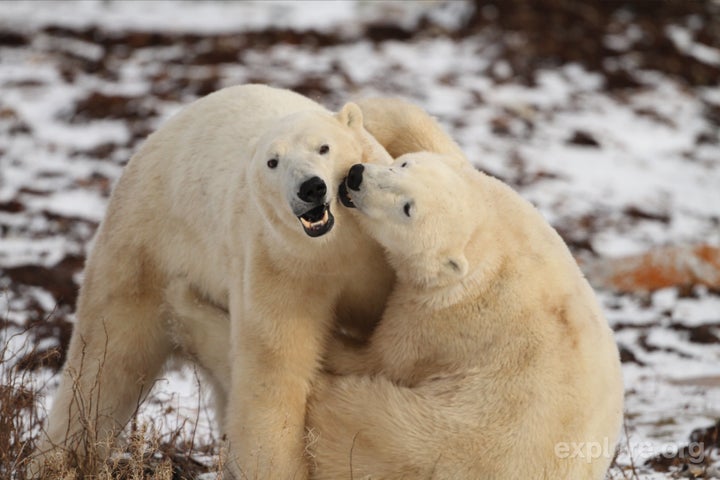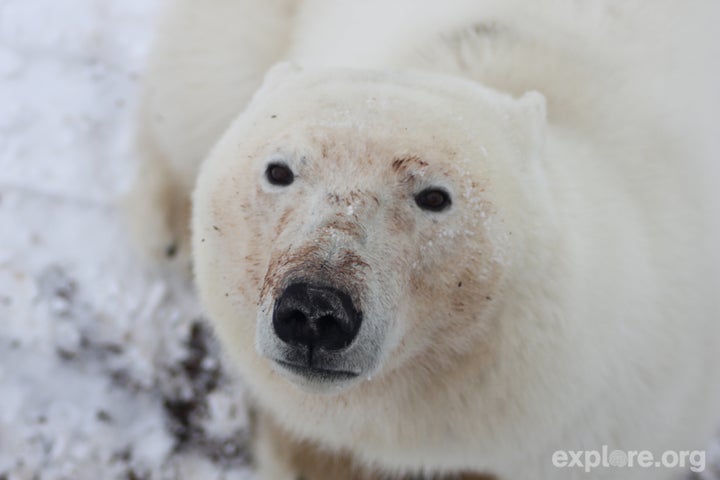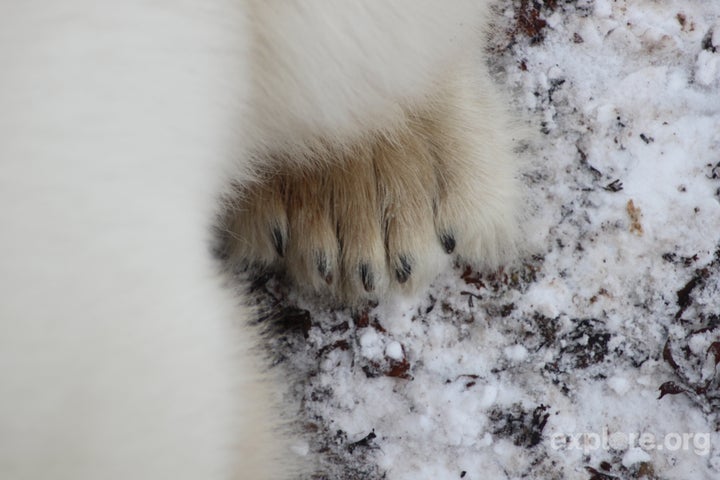There's no better symbol of the melting Arctic than the polar bear.
Every year, BJ Kirschhoffer, Polar Bears International field operations director, heads to Churchill's Hudson Bay in Manitoba, Canada, to bring the migration of world's southernmost polar bear population to people's computer screens via a live camera he mans from a tundra buggy. The footage is all viewable during Polar Bear Week -- an awareness event put on every November by PBI, Explore.org and Frontiers North Adventures -- in hopes of raising climate change awareness.
Kirschhoffer says these approximate 800 bears at Hudson Bay are the perfect face of the realities of climate change because their part of the Arctic is melting faster than others.
Right now, they're waiting for the bay to freeze so they can head out on it and start catching seals after months of hibernation. Until then, they're hanging out with Kirschhoffer and sometimes getting so close to his live cam that they try to chew on it. The Huffington Post chatted with him to find out more about what goes on behind the scenes and what he hopes viewers at home take away from watching these fascinating creatures.

HuffPost: What are some of the most fascinating things you’ve gotten to see while you’re out in the buggy?
Kirschhoffer: The thing that always amazes me is seeing this animal that’s really adapted to live in this climate where a human just wouldn’t last very long. When we sit here in their environment all warm and cozy in our buggy watching the bears, it just constantly amazes me how they’ve adapted to become to an animal that can survive in such conditions.
What are some of the best things people can see on the live cam?
The sparring (play-fighting) is a definite highlight, when the big male bears are sharpening their skills for mating season. There aren’t any food sources right now, and it’s not mating season so there aren’t any girls to fight over, so occasionally the male bears will get up and start to kind of practice. When you have two huge animals standing on their hind legs beating each other with paws the size of dinner plates, it really is impressive.
When the bears start to get playful, oftentimes they’ll find a stick or a piece of kelp. This morning we had one pick up a piece of kelp, flick it up over his head and let it go flying. Any time they get playful and goofy, people really enjoy that.
Right now they’re forced into close contact with one another. You’ll definitely see them palling around with each other. They’re fairly social in this setting.
Sometimes you’ll get a really curious cub. If they’re the cubs born that year, mom generally doesn’t let them get too far away and she’ll let out some sort of noise that indicates, “Hey get back over here, little one!” When they’re 2-year-old cubs, when they’re getting pretty close to being on their own, they can be a little more defiant of mom and will try to get further away.

I’ve heard people compare polar bears’ movement to that of dogs. Is that something you’ve noticed too?
Oh totally. A couple years ago I came out early to set up the Explore.org cams, so I was all by myself out on the buggies, twisting wires and getting things ready. Out of nowhere a polar bear showed up. I look down at it and it’s kind of looking at me and it’s just us out here on the tundra, so it kind of felt this was my labrador. They do seem very curious and dog-like, but of course you wouldn’t want to get down and pet it behind the ears, because that’d be the last thing you’d do.

Have you been witness to the effects of climate change in this area over the last decade? Have you seen things get worse?
When you look at graphs over a long period of time you can definitely see the trends. Sitting here on the ground, it’s hard to say, but I can tell you right now right now I’m wearing a very light down jacket, I’m hanging out outside the buggy and I didn’t put my gloves on all day. It’s probably a little warmer than average. I don’t think we can attach today’s weather to climate change, but this is the type of weather we expect to see in the future. You can’t form sea ice with weather like there is today, and if you end up with a lot of days like today, the bears are going to have to wait longer before they can get onto the ice and it will take longer to get their source of seals.
